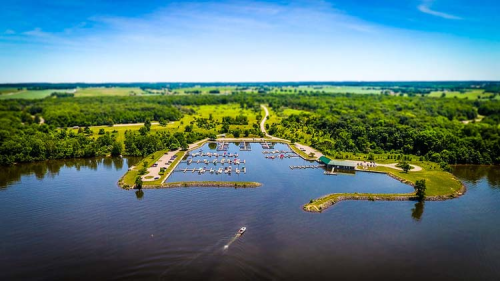Amenities

History
Buck Creek was home to Native Americans and pioneers. The land at the time of early European settlement was mostly covered by large trees with minimal undergrowth. Occasionally, the forests were interrupted by prairie openings. In 1780, George Rogers Clark, a key Revolutionary War figure, led a band of nearly 1,000 Kentuckians in a raid against Ohio Native American. The Shawnee were forced out of their camp, which they called Old Chillicothe (near Xenia), and fled to Piqua, the Shawnee capital, located west of the present site of Springfield. Clark pursued, and the Shawnee were defeated at the Battle of Piqua. Most of the Shawnee, however, had dispersed into the woodlands. Hiding in the woods was the young Tecumseh, who vowed to avenge the attack. Following the battle, Clark's men retreated to their homes in Kentucky and the Shawnee moved north. A new Piqua was erected on the banks of the Miami River. This battle put a temporary end to Native American warfare.
In 1799, legendary frontiersman Simon Kenton settled in the region with six other Kentucky families. The group lived near the confluence of Buck Creek and Mad River. After two years, the settlers moved to different areas. Kenton established a home along Buck Creek about 4 miles north of present Springfield. Settlement brought change to the area as trees were cut to construct buildings. Acres were cleared and farm crops were planted. The European settlers found the land extremely fertile. Springfield was founded in 1801 and has served since then as the county seat of Clark County. In 1838, the National Road (U.S. 40) reached Springfield, opening new markets for manufacturing and agriculture. Over the years, Springfield's character changed from rural to industrial. By 1880, the community led the nation in the manufacturing of agricultural implements. In September 1966, work was started by the U.S. Army Corps of Engineers to impound Buck Creek as a flood control project. In 1974, the Clarence J. Brown Dam and Reservoir were dedicated and an agreement gave the Ohio Department of Natural Resources the operation of much of the area. Buck Creek State Park was officially opened in June 1975.